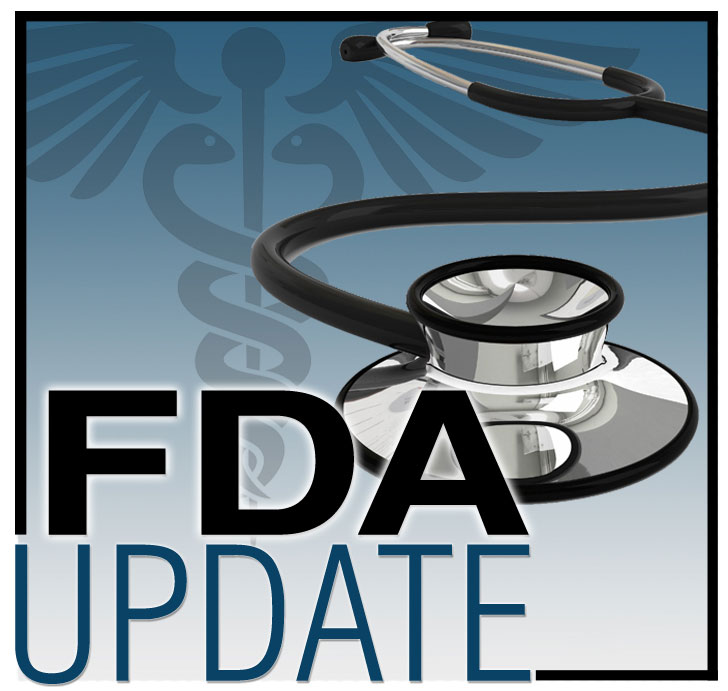On March 22, 2024, the U.S. Food and Drug Administration (FDA) fully approved mirvetuximab soravtansine-gynx (Elahere®) for adult patients with FR alpha–positive, platinum-resistant epithelial ovarian, fallopian tube, or primary peritoneal cancer who have received one to three prior systemic treatment regimens. Patients are selected for treatment based on an FDA-approved test. FDA gave mirvetuximab soravtansine-gynx accelerated approval for the indication in November 2022.

Efficacy was evaluated in Study 0416 (MIRASOL, NCT04209855), a multicenter, open-label, active-controlled, randomized, two-arm trial involving 453 patients with platinum-resistant epithelial ovarian, fallopian tube, or primary peritoneal cancer who had received up to three prior lines of systemic therapy. The trial enrolled patients whose tumors were positive for FR alpha expression as determined by the VENTANA FOLR1 (FOLR1-2.1) RxDx Assay.
Patients were randomized 1:1 to receive mirvetuximab soravtansine-gynx 6 mg/kg (based on adjusted ideal body weight) as an IV infusion every three weeks or investigator’s choice of chemotherapy (paclitaxel, pegylated liposomal doxorubicin, or topotecan) until they experienced disease progression or unacceptable toxicity. The trial’s current results satisfy the accelerated approval’s postmarketing requirement.
The major efficacy outcome measures were overall survival (OS), investigator-assessed progression-free survival (PFS), and confirmed overall response rate (ORR) per investigator assessment. PFS and ORR were evaluated according to RECIST, version 1.1. Median OS was 16.5 months (95% CI = 14.5, 24.6) in the mirvetuximab soravtansine-gynx arm and 12.7 months (95% CI = 10.9, 14.4) in the chemotherapy arm (HR = 0.67; 95% CI = 0.50, 0.88; p = 0.0046). Median PFS was 5.6 months (95% CI = 4.3, 5.9) and 4.0 months (95% CI = 2.9, 4.5) for the respective arms (HR = 0.65; 95% CI = 0.52, 0.81; p < 0.0001). ORR was 42% (95% CI = 36, 49) and 16% (95% CI = 12, 22), respectively (p < 0.0001).
The prescribing information contains a boxed warning for ocular toxicity and includes pneumonitis, peripheral neuropathy, and embryo-fetal toxicity under warnings and precautions. The most common adverse reactions, including laboratory abnormalities, reported in at least 20% of patients were increased aspartate aminotransferase, fatigue, increased alanine aminotransferase, blurred vision, nausea, increased alkaline phosphatase, diarrhea, abdominal pain, keratopathy, peripheral neuropathy, musculoskeletal pain, decreased lymphocytes, decreased platelets, decreased magnesium, decreased hemoglobin, dry eye, constipation, decreased leukocytes, vomiting, decreased albumin, decreased appetite, and decreased neutrophils.
The recommended mirvetuximab soravtansine-gynx dose is 6 mg/kg adjusted ideal body weight administered once every three weeks (21-day cycle) as an IV infusion until patients experience disease progression or unacceptable toxicity.
View FDA’s prescribing information and ONS’s oncology drug reference sheet for mirvetuximab soravtansine-gynx.
This application was granted priority review. FDA-expedited programs are described in the Guidance for Industry: Expedited Programs for Serious Conditions—Drugs and Biologics.
Healthcare professionals should report all serious adverse events suspected to be associated with the use of any medicine and device to FDA’s MedWatch Reporting System or by calling 800-FDA-1088.
For assistance with single-patient applications for investigational oncology products, healthcare professionals may contact OCE’s Project Facilitate at 240-402-0004 or email OncProjectFacilitate@fda.hhs.gov.





